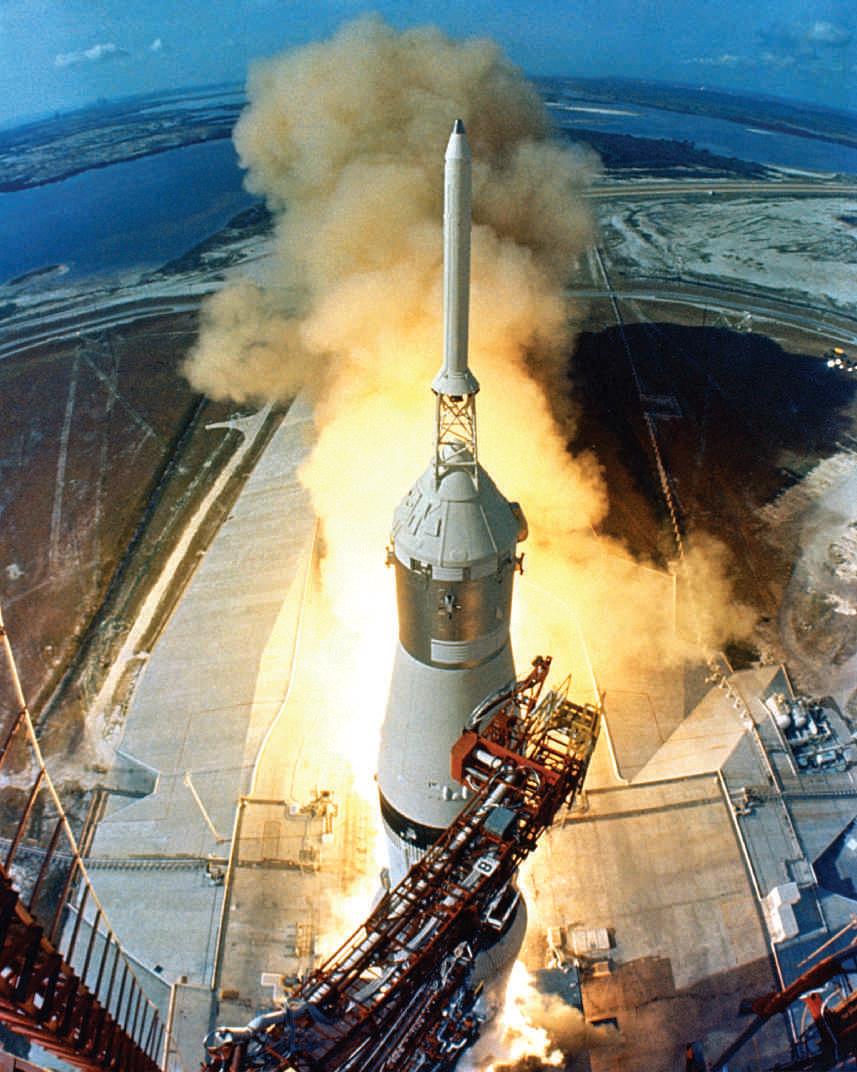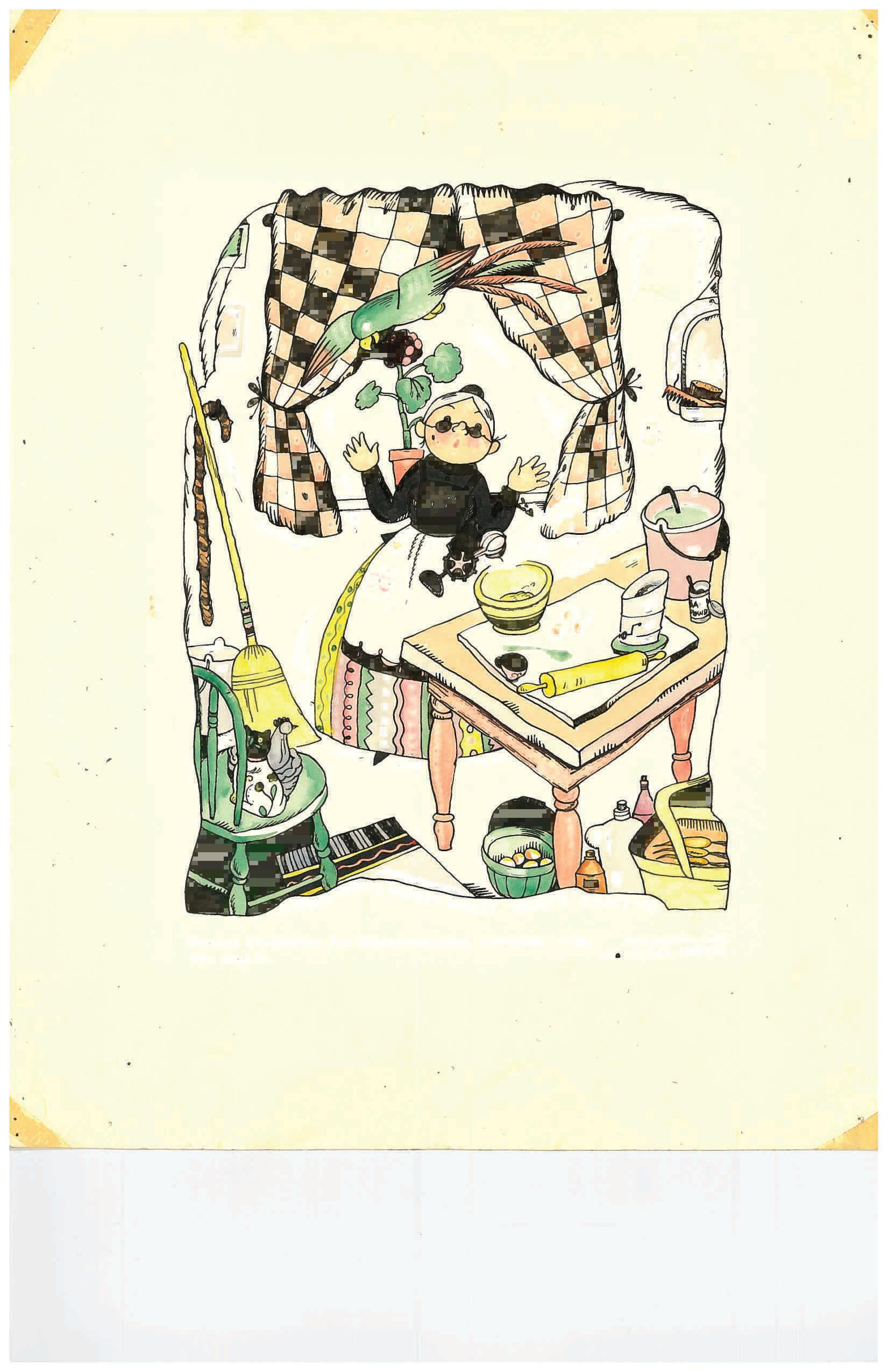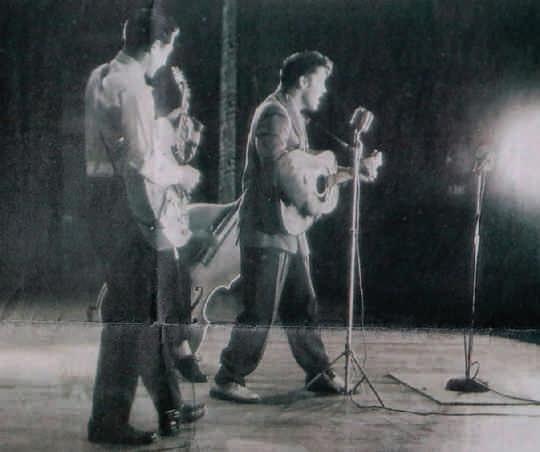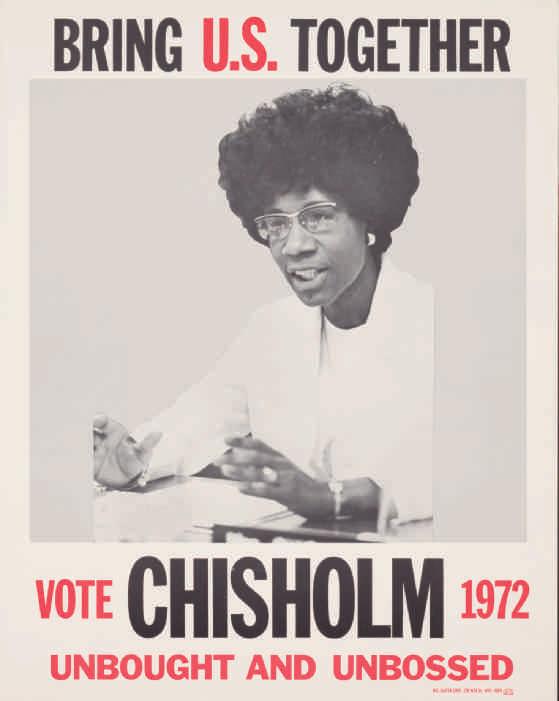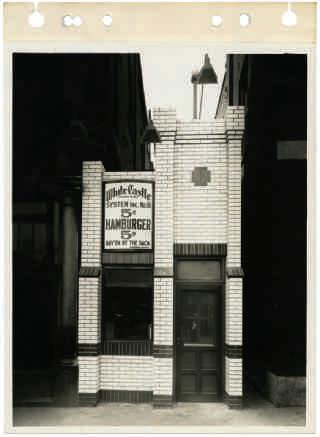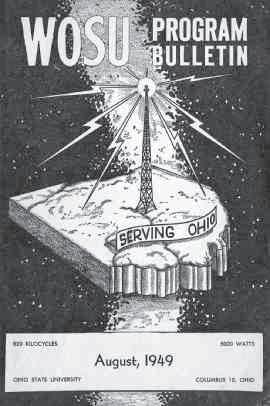
31 minute read
In the News
OHIO HISTORY FUND Donations Fund $130,900 in Grants
The Ohio History Connection has awarded $130,900 in Ohio History Fund grants for history- and preservation-related projects to 14 organizations in the Buckeye State. Recipients include:
CENTER FOR COMMUNITY VOICES AT WYSO PUBLIC RADIO, YELLOW SPRINGS
$12,240 for the WYSO Digital Audio Archives Strategic Plan. Using its grant, WYSO will engage an archives consultant to guide development of a master plan for cataloging and digitizing its collection of 5,000 audio recordings chronicling life in the Miami Valley between 1958 and 1990. The project is time-sensitive, as some of the collection is at risk of being lost due to physical deterioration and obsolete formats.
CITY OF HUDSON
$17,000 for Historic Old Hudson Township Burying Ground Restoration and Preservation. Part of the Hudson Historic District, the cemetery was established in 1808 and holds remains of notable citizens such as Owen and Ruth Brown, parents of abolitionist John Brown, and David Hudson, for whom the town is named. The project will result in professional conservation of about 150 headstones and markers led by an experienced cemetery conservator.
CITY OF NEW FRANKLIN
$4,947 for Tudor House Digital Floor Plans and Section Blueprints. Built in 1928 as a private home, Tudor House is now a city-owned events center. To remain a responsible steward, the city must maintain the house, preserve its historic appearance and plan for its future, impeded by the fact that only 30 of the estimated 126 pages of original blueprints survive. Using the grant, the city will re-create complete floor plans and sections on paper and in digital form.
CITY OF SHELBY
$2,967 for the Shelby City Council Minutes Digitization Project. The city will digitize and transcribe about 5,800 pages of minutes, incorporation records and ordinances dating from 1863 to 1934. The 13 volumes containing the records are fragile. Grant funds will pay a professional digitization company to do the work. The goal is to make the information in these primary sources more accessible, as they record details of the city’s history, about which little has been written.
DECORATIVE ARTS CENTER OF OHIO, LANCASTER
$7,735 for the Rising Family Digitization Project. Acquired by the center in 2020, the Rising/Reece/ Peters family papers document everyday life among Lancaster’s leading families in the 19th century. Digitizing the papers will make them widely and freely available to researchers and the general public through a partnership with Columbus Metropolitan Library. Grant funds will pay a digitization specialist to complete the project.
DIVERSE MEDIA ZONE, COLUMBUS $15,398 for the documentary A Higher Law: The OberlinWellington Rescue. In 1858, John Price, an Oberlin resident and former slave, was captured by a federal marshal, pursuant to the Fugitive Slave Law of 1850. A crowd of antislavery men from Oberlin and Wellington later freed Price and helped him escape to Canada. Using grant funds, the recipient will produce a halfhour documentary about this important event in Ohio history.
DUNHAM TAVERN MUSEUM, CLEVELAND
$10,200 for roof rehabilitation. Designated a Cleveland Landmark and listed in the National Register of Historic Places, Dunham Tavern is a stagecoach stop built in 1824 and is the oldest building on its original site in Cleveland. Balancing budget constraints against the need to maintain a stable roof, the project will replace a section of the roof that is no longer cost-effective to repair.
Cleveland’s Dunham Tavern Museum
GORMAN HERITAGE FARM FOUNDATION, EVENDALE $10,583 for the Gorman Heritage Farm Historic Sign Project. The project will place approximately 60 signs around the farm to help visitors understand food production and identify farm buildings and equipment as well as give directions. Grant funds will cover project staff time and the cost of creating the signs.
GREEN LAWN CEMETERY ASSOCIATION, COLUMBUS $5,817 for the project Separate but Equal? Policies and Practices of African American Burials at Green Lawn Cemetery. The project will enable research on burials of African Americans at Green Lawn and share those findings with the public, in partnership with Columbus Metropolitan Library. Grant funds will pay for time and travel of the principal researcher and a subscription to software that will be used to present project findings online.
LORAIN HISTORICAL SOCIETY, LORAIN $8,415 for the Latino Lorain History Project. The grant will enable the society to hire a staff member to administer an oral history project. Building on already strong relationships, its goal is to collect oral histories from older members of the city’s Latino community. In addition to indexed transcripts of interviews, a result of the project will be a virtual museum of the community hosted on the society’s website.
MALTZ MUSEUM OF JEWISH HERITAGE, CLEVELAND $3,400 for antiracism training for volunteer docents. The museum “promotes an understanding of Jewish history, religion and culture and builds bridges of tolerance and understanding with those of other religions, races, cultures and ethnic backgrounds.” To further its mission, the museum seeks to encourage docents to examine the biases they bring to their work. Grant funds will be used to bring in an expert facilitator.
OVER-THE-RHINE MUSEUM, CINCINNATI
$16,286 for a historic structures report describing in detail the history of the building where the museum will be located and the diverse people who lived there over time. The next step in the organization’s development, the report will guide decisions about the building and, later, creation of exhibits.
TRUMBULL COUNTY HISTORICAL SOCIETY, WARREN $12,045 for the project Saving Warren’s Urban Renewal Archive. The grant will pay in part the costs of staff, equipment and supplies to preserve records of urban renewal in Warren and make them accessible. The project will save about 750 documents that record vanished streetscapes and neighborhoods. Once catalogued, they will be available in an online archive.
WATERVILLE HISTORICAL SOCIETY, WATERVILLE
$3,867 for the Wakeman Hall HVAC system. The new heating, ventilating and air conditioning system replaces a 20-year-old system that is at the end of its useful life. The new unit will provide better climate control for preservation of the historical materials kept in Wakeman Hall. Money the volunteer-run organization will save in repairs to a failing unit will instead be budgeted for other mission-related projects.
ABOUT THE OHIO HISTORY FUND
The Ohio History Fund is a competitive matching grants program funded entirely by Ohio taxpayers’ voluntary contributions through the “check-off” on state income tax forms. In 2006, creation of a tax check-off to fund a statewide grants program for history- and preservation- related projects was identified as a priority by participants in the annual Statehood Day legislative advocacy event sponsored by the Ohio History Connection and nine partner organizations: Heritage Ohio, the Ohio Academy of History, Ohio Archaeological Council, Ohio Council for Social Studies, Ohio Genealogical Society, Ohio Historical Records Advisory Board, Ohio Local History Alliance, Preservation Ohio and the Society of Ohio Archivists. It became a reality in 2011 when Gov. John R. Kasich signed Ohio’s two-year state budget into law. The tax check-off first appeared on state income tax forms in 2012 for tax year 2011, and the first grants were awarded to 11 recipients across the state in 2012. Since 2013, the History Fund has made 94 grants totaling nearly $870,000.
YOU HELP MAKE GRANTS POSSIBLE
When you make a voluntary gift to the History Fund through the check-off on your Ohio personal income tax form, you help make grants like these possible. The History Fund is also aided by sales of Ohio History “mastodon” license plates and direct contributions to the Ohio History Connection for the Ohio History Fund. Know of a worthy history- or preservation-related project that could benefit from an Ohio History Fund grant? Applications for 2022 Ohio History Fund grants are due Sept. 1, 2021. Find application forms and more information at ohiohistory.org/historyfund starting in mid-June or call 800.686.6124 or 614.298.2000.
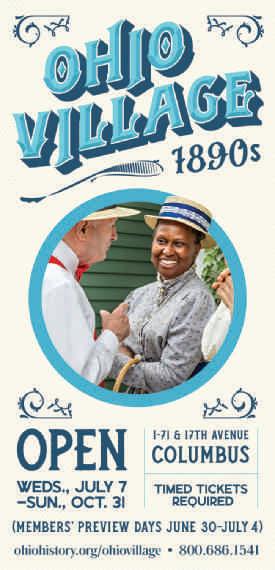
THE SOUNDTRACK OF HUMANITY
A Juneteenth Celebration with Dr. Ted McDaniel and Dr. Mark Lomax Hosted by the Ohio History Center
ONLINE—ATTEND FROM ANYWHERE!
Sat., June 19 1–2:30 p.m.
Advance registration required:
ohiohistory.org/virtual
The Newark Earthworks Were Built to Be a Gathering Place
by Burt Logan
Two thousand years ago, the Newark Earthworks, then a four-squaremile enclosure, were a gathering place for people from across North America. They walked and canoed hundreds, even thousands, of miles to participate in ceremonies and other sacred events. They brought with them copper from the upper Great Lakes, grizzly bear teeth from the Rocky Mountains and marine shells from the Gulf of Mexico. This pilgrimage undoubtedly served as a rite of passage and celebration in some yet-to-be-known form. Then time moved on, and the Newark Earthworks became a different kind of gathering place. For the past 111 years, the Octagon Earthworks, a part of the Newark Earthworks, have been a place where the members of Moundbuilders Country Club have enjoyed golf and other social amenities.
ANOTHER KIND OF GATHERING PLACE
Today, it is time for the Octagon Earthworks to become yet another kind of gathering place—a place where Ohioans and—by opening the door for World Heritage inscription— people from around the world, will gather. They will come to marvel at the human ingenuity that conceived, designed and built the largest earthen ceremonial structures in the world. They will marvel at how what many might regard as a primitive society built massive geometrical earthworks, basket-by-basket, that are so precise the circumference of a 1,200-foot-diameter circle is nearly perfect. They will marvel at how this same society mapped and understood the movements and position of the moon during its complex cycle that lasts 18.6 years. And, they will marvel at how this society combined its mastery of geometry and their knowledge of astronomy to build a ceremonial complex that attracted people from thousands of miles away. Two thousand years ago, Newark was a spiritual and ceremonial epicenter for North America. Today, Newark can again be a regional, national and even international epicenter—this time as the destination for an educational pilgrimage to learn more about the rich heritage that has been handed down to us.
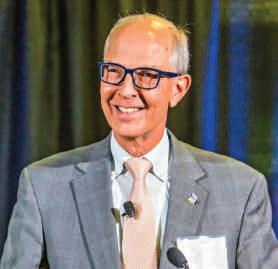
A PLACE OF AWE AND WONDER
The time has come for the Octagon Earthworks to again be a gathering place of awe and wonder, just as it was 2,000 years ago. In April, the Supreme Court of Ohio heard oral arguments of the appeal by Moundbuilders Country Club challenging the findings of the Fifth District Court of Appeals, which upheld the ruling by the Licking County Common Pleas Court that the Ohio History Connection has the authority to acquire the lease and that such acquisition is necessary and is for a public purpose. The Supreme Court is expected to issue its decision later this year. Until this world-renowned site is publicly accessible, I hope you will join us on one of the few days a year when we can fully access the Octagon Earthworks site. Upcoming open houses are on July 26 and Oct. 17. Learn more at ohiohistory.org/ octagon.
Burt Logan is executive director and CEO of the Ohio History Connection.
THE NEXT 10 YEARS Relationship-Building: At the Heart of All We Do
by Ben Garcia My husband and I moved to Columbus from San Diego about 18 months ago. Six months after we arrived, the state issued stay-athome orders. And so, I have spent the majority of my time in this job working from our home, building relationships. My role provides many opportunities to connect with colleagues, site partners, tribal representatives, members of state and local governments, community advocates, donors, volunteers and others who together make up the matrix of relationships that keeps Ohioans connected to our histories and the history of our home state. Many folks remark on the contrast between San Diego and Columbus when they learn that I am a recent transplant, and I understand why. But as I think about the Ohio History Connection’s strategic priority of relationship-building, I am struck more by their similarities. Both are cities that feel like groupings of small towns. Both are large enough to attract a mix of in-state, national and international residents who together create social and cultural (and culinary) options where anyone can expand a horizon without leaving town. Both exist in states with strong regional identities. And both are places where you can pick up the phone or send an email to just about anyone and get a response. The importance of relationships is a defining trait of both cities.
A STATEWIDE NETWORK OF RELATIONSHIPS
We wrote our strategic plan in the summer and early fall of 2020 and identified relationship-building as a priority for a couple of reasons. One was that we were sitting in our respective homes, communicating over video and contemplating the social and economic toll of the pandemic. We understood that our best strategy for thriving as an organization that is, at its core, a statewide network of relationships, was to strengthen those ties. In other words, to reach out rather than hunker down. Last summer we reached out to establish relief funds for local history organizations and provided additional resources and counsel to our site partners. Like many of our peers, we moved our educational and historic preservation programs online to support educators, families, students and Ohio’s historic neighborhoods (through federal and state tax credits for repurposing historic buildings). And our funders and members did the same for us, sticking by us during the hard times and helping us weather the storm in any way they could.
The second reason was that we were viewing the social upheavals, demonstrations and protests of the past year through the lens of history. We took seriously our responsibility to contextualize the events of 2020 and early 2021 for Ohioans through exhibitions, educational programs, blog posts, articles and panel conversations. We hold the state’s archives, work with historic sites in every region of the state and provide services for all of Ohio’s 88 counties. We are a multifaceted organization serving a broad set of constituents. And relationships are what make things work during complicated times.
THE BEST APPROACH
Disability advocates understand that universal design (a design approach that works for people living with disabilities) is usually the best design solution for everyone. We need only look at history to know that taking relationship-building seriously is the best approach to sustaining community, civility and shared identity. Go ahead and drop me an email at bgarcia@ohiohistory.org. As a new Ohioan, I will definitely make time to reply. Ben Garcia is deputy executive director and chief learning officer for the Ohio History Connection.
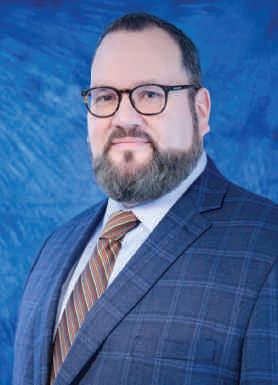
A History of Juneteenth
by Jerolyn Barbee and Derek Pridemore, National AfroAmerican Museum & Cultural Center Our current national conversation about race is leading many of you to want to dig deeper into the real stories of African American history. On June 19, many Black communities will commemorate Juneteenth. It’s hard to believe that this milestone of American history isn’t more well-known. The story of Juneteenth is an essential part of the history of the Civil War. During the Civil War, the Emancipation Proclamation made slavery’s demise one of the North’s principal war aims. But in the beginning, few Northerners or Southerners thought the conflict was about slavery. Southerners contended that the war was the result of the federal government’s refusal to respect the rights of the states. Northerners argued that the federal government had to protect and preserve the Union. President Abraham Lincoln also sought only to preserve the United States. Lincoln refused to end slavery during 1861 and the first half of 1862 for several reasons. First, he believed that the United States Constitution prevented the president from seizing the property—enslaved Africans—of a citizen without due process. Second, Lincoln didn’t want to alienate the residents of slave states that had remained in the Union. These included Kentucky, Missouri, Delaware and Maryland. If these states joined with the South, thousands more men would join the Confederacy. Lincoln wanted to solidify the North’s control over these slaveholding states. Third, Lincoln realized that many Southerners and Northerners would not support the end of slavery because it would pave the way for African American equality. Finally, Lincoln worried that ending slavery would alienate any Union sympathizers currently in the South, further strengthening the Confederacy.
CONVINCED SLAVERY HAD TO END
But by the summer of 1862, Lincoln had become convinced that slavery had to end. Northern troops had firm control over the border states. Lincoln was convinced that any Union support in the Confederacy would not persuade secessionists to rejoin the United States. And a growing number of Northerners began to believe that slavery was morally wrong. As Northern soldiers marched into the South, many of these men saw the real brutality of slavery for the first time. These soldiers wrote to their loved ones in the North about the injustice, prompting calls for the end of slavery. Eventually, Lincoln decided that the federal government did have the right to hamper the South’s ability to wage war. He reasoned that the Constitution allowed the president to adopt measures during times of war to help guarantee a military victory. Lincoln decided that ending slavery would diminish the Confederate war effort, making his actions legal under the United States Constitution.
Lincoln drafted an initial version of the Emancipation Proclamation in July 1862, but he did not issue it to the public until Sept. 22, 1862. Lincoln believed that U.S. citizens and other nations might negatively view his action unless some Union victories preceded it. Following the Battle of Antietam on Sept. 17, 1862, Lincoln finally had a critical Union victory in the East.
Library of Congress
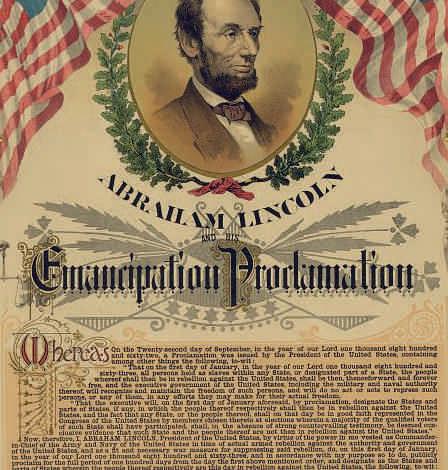
Emancipation Proclamation printed about 1888 by The Strobridge Lithographing Co., Cincinnati
ORIGINATED IN TEXAS
Ohioans greeted the Emancipation Proclamation differently. Radical Republicans, like Sen. Benjamin Wade (see page 14), welcomed the document, as did Ohio’s abolitionists and Quakers. Others, especially those from workingclass backgrounds, were not as welcoming. Many feared that Blacks would flee the South, move to northern states, and take jobs away from white working people. Some Ohioans serving in the Union military refused to fight a war to end slavery, so they deserted and returned home.
The Emancipation Proclamation did not end slavery in the border states or in areas in the South that Union forces had conquered. Slavery did not end everywhere in the United States until the passage of the 13th amendment to the United States Constitution in 1865.
However, the news about the 13th amendment did not reach many southern plantations. Soon after the war, the state of Texas itself abolished slavery on June 19, 1865. On that day, there were still enslaved African Americans in Galveston and other cities. When Union General Gordon Granger came to Galveston to enforce the emancipation, word spread quickly, and a celebration ensued. Today, Texas and 44 other states recognize Juneteenth as an official holiday.
To this day, the holiday is celebrated as Freedom Day or Juneteenth Independence Day by many African Americans, and by our institution. The Ohio History Connection’s National Afro-American Museum & Cultural Center held its first Juneteenth Jubilation at the museum grounds, bringing the community together with music, games, food, dancing, crafts and learning about our heritage. Each year, the museum celebrates Juneteenth to ensure that all Ohioans remember what it means to African Americans and to the history of our entire country. Juneteenth represents one of the first steps toward equality for enslaved African Americans. Although the unknown road ahead still meant another 160-year human rights struggle for African Americans, our ancestors on June 19, 1865, still yelled in unison, “We Are Free.”
This story was originally published in June 2020 as an Ohio History Connection History Blog post. The Ohio General Assembly designated June 19 as "Juneteenth National Freedom Day" in 2009. Senators Hearcel F. Craig (D-Columbus) and Andrew Brenner (R-Powell) have introduced Senate Bill 78 to declare Juneteenth a paid state holiday in Ohio. The bill is a reintroduction of Senate Bill 334 from the past General Assembly, passed unanimously through the Senate. Join us on June 19 when the Ohio History Center and National AfroAmerican Museum & Cultural Center host a virtual Juneteenth with the program Black Music, the Soundtrack of Humanity, featuring professors Ted McDaniel and Mark Lomax. See page 18.
HISTORIC PRESERVATION Four Communities Receive Paul Bruhn Historic Revitalization Grants
Grants totaling $456,327 from the National Park Service’s Paul Bruhn Historic Revitalization Grants Program have been awarded to projects in Painesville, Piqua, Ravenna and Van Wert through the Ohio History Connection’s State Historic Preservation Office. Ohio is one of eight states awarded Paul Bruhn grant funding. The grants will assist four Ohio Main Street communities with historic building rehabs. Projects awarded grants include:
PAINESVILLE
Lake County National Bank Building, 30 S. Park Pl. • $94,330 A local financial hub since its completion in 1965, the former Lake County National Bank Building was recently vacated. The owner plans to revitalize it to serve Lake Erie College students, offering mixeduse space including residential. Paul Bruhn funds will go toward exterior rehab, including spot repointing of the brick, brick replacement where necessary and exterior cleaning.
PIQUA
S. Zollinger Co. Building, 101 S. Wayne St. • $95,000 Built in 1915 as a commercial grocery warehouse, the Zollinger Building has been vacant for over a decade. Owners plan to reimagine the space for mixed uses including residential and a ground floor market hall. Grant funds will help restore historic windows to operating efficiency and replace windows that aren’t historic with complementary replacements. Riddle Block 9, 113-115 Chestnut St. • $109,440 The 50,000-square-foot Riddle Block 9, built in 1911, will be readied for a variety of potential uses including commercial, office, retail, residential and light industrial. Paul Bruhn funds will return vacant residential and commercial spaces to active use, and the glass-roofed atrium will also be restored.
VAN WERT
The Kauke & McCurdy Block, 101 E. Main St. • $157,557 As part of an ambitious downtown initiative, the Van Wert County Foundation has been awarded Paul Bruhn funds to invest in the historic Kauke & McCurdy Block, once home to the local chapter of the Independent Order of Odd Fellows. The grant will fund installation of a new elevator, vital to making the three-story building accessible and attractive for contemporary use. Plans include 16 new housing units and rehabbing 5,780 square feet of commercial space. The Ohio Main Street Program, administered by Heritage Ohio, works with communities across the state to revitalize historic or traditional commercial areas. Based in historic preservation, the Main Street approach was developed by the National Trust for Historic Preservation to save historic commercial architecture. It has become a powerful economic development tool as well.
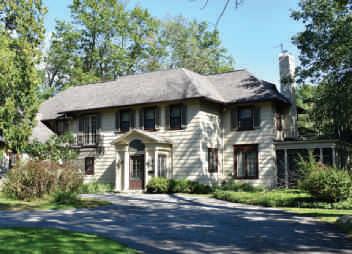
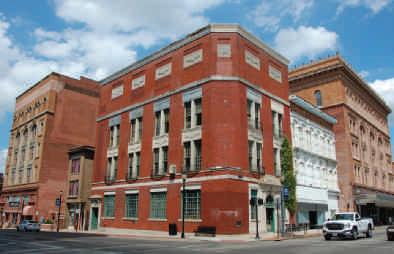
HISTORIC PRESERVATION Recent Ohio Additions to the National Register of Historic Places
AKRON • SUMMIT COUNTY A. SCHRADER’S SON INC. OF OHIO BUILDINGS • 705-711 Johnston St.
A. Schrader’s Son Inc. invented the Schrader Valve used in every modernday automobile tire and many bicycle tires. After the company built a functional distribution building at 705 Johnston St. in 1921 at the height of Akron’s rubber boom, demand for Schrader products grew rapidly and in 1926, Schrader hired Turner Construction to build the adjoining five-story warehouse. The warehouse is an especially well-preserved example of a building type called a “daylight factory,” characterized by reinforced concrete construction, large steel-sash windows and an open floor plan.
CANTON • STARK COUNTY MCKINLEY PARK APARTMENTS 510 High Ave., S.W.
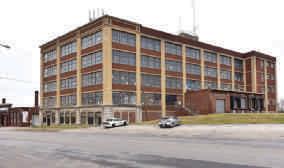
The McKinley Park Apartments building was completed in 1969 by Stark Metropolitan Housing Authority. Associated with Canton’s social and architectural history, the 11-story building houses 81 senior housing units in a Modernist tower. Representing Stark Metropolitan Housing Authority’s mission of providing affordable and quality senior housing, it also illustrates federal design guidelines for senior housing at the time and the authority's commitment to a holistic program that encouraged independent senior living through thoughtful site selection, design and amenities.
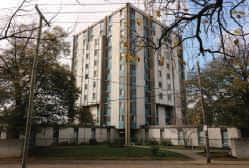
CLEVELAND • CUYAHOGA COUNTY ERIEVIEW HISTORIC DISTRICT Roughly bounded by Lakeside Avenue, Chester Avenue, East Ninth Street, and East 12th Street
A massive Urban Renewal project launched in 1948 and completed in 1983, the Erieview Historic District has been added to the National Register of Historic Places for its association with the history of community planning and development in Cleveland and as a significant collection of modern architecture that includes works by prominent local and national firms of the era.
CLEVELAND HEIGHTS CUYAHOGA COUNTY OAKWOOD CLUB SUBDIVISION HISTORIC DISTRICT • 1538-1688 Oakwood Dr. and 1598 and 1681 Wood Rd.
Formed by Jewish community leaders at the turn of the 20th century, the Oakwood Club finished an 18-hole golf course in 1915, then created a subdivision for members of the club abutting the fairway. Deed restrictions required substantial homes, with plans approved by an Oakwood Club committee to produce “conformity to the common improvement and beauty of the subdivision.” Situated along red-brick-paved Oakwood Drive are 15 Colonial Revival and French Colonial or Norman Revival style houses designed by noted Cleveland architects Howell and Thomas, along with other significant architects, among them John Sherwood Kelly, Charles Greco, Willard Hirsh, Charles C. Coleman, Almirall and Coughlin, and Wallace G. Inghram.
CUYAHOGA FALLS • SUMMIT COUNTY BERKSHIRE PARK HISTORIC DISTRICT Roughly bounded by Oakwood Drive, Roosevelt Avenue, Elmwood Street, Fourth Street, Third Street and Miller Court
Added to the National Register for its local architectural significance, the Berkshire Park Historic District features mainly Craftsman, Dutch Colonial and Tudor Revival style single-family bungalows designed by Akron architects Fichter and Brooker and built by Akron developer-builder Nathan M. Berk. Development began in 1923, when Cuyahoga Falls City Council approved the plat of “Nathan Berk’s Berkshire Park Re-subdivision,” including the styles of houses that represent Berk’s “Quality Homes.” Berk died in 1929, and after the Great Depression and World War II, Cape Cod and other small house styles and
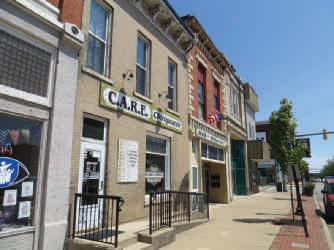
types of the postwar era were added on vacant lots.
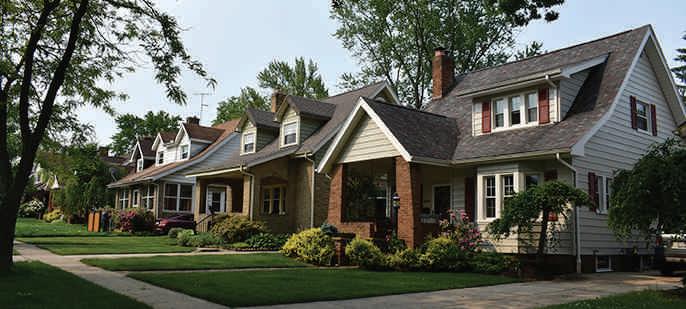
GREENFIELD • HIGHLAND COUNTY GREENFIELD COMMERCIAL HISTORIC DISTRICT • Roughly bounded by Jefferson, Washington and Mirabeau streets
The Greenfield Commercial Historic District has been added to the National Register for its local architectural significance and its association with the history of commerce in Greenfield from 1854 to 1967. The time period covers the arrival of the railroad and downtown’s early growth into a selfsustaining commercial center serving residents of Greenfield and the surrounding farming community in Highland, Ross and Fayette counties.
MARBLE CLIFF • FRANKLIN COUNTY LANMAN-INGRAM HOUSE 2015 W. Fifth Ave.
The Lanman-Ingram House is an example of Columbus architect Frank L. Packard’s early-20th-century suburban houses. An article in The Craftsman magazine described Packard as “a pioneer in the building of dwellings from local materials and in harmony with the landscape.” Its first two owners were successful business leaders in Columbus and the house reflected their tastes and aspirations. William K. Lanman was treasurer of the Columbus Bolt Works Co. in 1908 when he commissioned Packard to design this house. William “Billy” Ingram, owner of the White Castle hamburger chain, bought it as his home in 1935 when he moved White Castle’s headquarters from Wichita, Kansas, to Columbus.
NEW LEXINGTON • PERRY COUNTY LUDOWICI ROOF TILE COMPANY HISTORIC DISTRICT • 4757 Tile Plant Rd.
The Ludowici Roof Tile Historic District reflects the history of industry in New Lexington. Rooted in Germany and founded in Chicago in 1893, Ludowici acquired the New Lexington site in 1906. Still an active maker of custom clay-tile products, the New Lexington complex is the oldest and last Ludowici plant in operation and a place where oldworld artisanship survives today.
SPRINGFIELD • CLARK COUNTY SPRINGFIELD DOWNTOWN HISTORIC DISTRICT • Roughly bounded by Columbia Street, Fountain Avenue, Main Street and Limestone Street
This group of 12 buildings reflects the history of commerce and architecture in downtown Springfield from 1878 to 1961. Key landmarks, some already in the National Register, include the 1878 Starrett & Fried Block, 1893 Bushnell Building and its 1903 addition, 1906 Fairbanks Building, 1917 Heaume Hotel and the Lagonda National Bank Building, built in 1884 and remodeled in 1928. Also in the district are the 1918 Mad River Bank, 1956 WesBanco Building and 1961 Key Bank Building; Chakeres State Theatre, opened in 1927; and several smaller buildings of the period.
WESTERVILLE • FRANKLIN COUNTY OTTERBEIN UNIVERSITY CARNEGIE LIBRARY • 102 W. College Ave.
Completed in 1908 and in library use until 1954, Otterbein University’s former Carnegie Library has been added to the National Register for its association with the early 20th century Carnegie Library program, its role in the history of Otterbein University and its local significance as an example of Columbus architect Frank L. Packard’s library and educational design work.
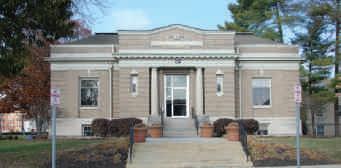
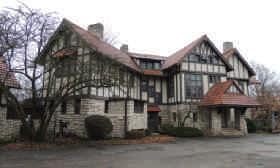
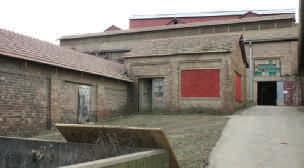
Ohio History Connection Archival Collections
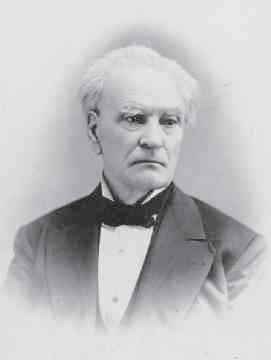
OHIO HEROES Benjamin F. Wade
Benjamin Franklin Wade (1800–1878) was a political leader from Ohio and a Radical Republican in the Reconstruction years after the Civil War. Wade was born on Oct. 27, 1800, near Springfield, Massachusetts. In 1821, Wade and his parents came to Ashtabula County, Ohio. He briefly taught school, although he never formally attended school in his life. He moved to Albany, New York, in 1823 to study medicine. He returned to Ohio in 1825 and studied law under Elisha Whittlesey. Wade passed the Ohio bar examination in 1828 and opened a law practice in Jefferson, Ohio.
KNOWN FOR HIS ABOLITIONIST VIEWS
In 1835, Wade went into politics and served as the prosecuting attorney of Ashtabula County from 1835 to 1837. Ashtabula voters elected Wade to the Ohio Senate in 1837 and 1838. As a state legislator, Wade favored the Whig Party’s platform and became well-known for his abolitionist views. He campaigned for the repeal of Ohio’s Black codes. His strong anti-slavery stance offended many Ohioans. Ashtabula voters refused to re-elect Wade in 1839, but he was elected to the Ohio Senate once again in 1842. In 1847, Wade became a judge of the Third Judicial Court of Ohio and held this position until the Ohio legislature elected him as one of Ohio’s two United States senators in 1851. Wade remained a senator until 1869. He was a strong supporter of the Republican Party and believed that equal rights should be extended to African Americans. The Ohio legislature failed to re-elect Wade in the election of 1868.
WIDELY RESPECTED IN THE NORTH
Southern senators viewed Wade as one of their strongest opponents during the 1850s and early 1860s. He was a major opponent of the KansasNebraska Act, and his opposition and fiery oratory helped establish the Republican Party in Ohio. Wade became widely respected in the North for his views on slavery. Several Republicans wanted to see Wade as their candidate for the presidency in 1860, but Ohio Republicans eventually united behind Salmon P. Chase. Nevertheless, Wade still received three votes at the Republican National Convention in 1860. During the Civil War, Wade remained in the Senate and chaired the Senate’s Special Committee on the Conduct of the War. Wade encouraged President Abraham Lincoln to subdue the Confederacy militarily, rather than seeking a quick end to the conflict through peaceful negotiations. In 1864, Wade helped author the Wade-Davis Bill. This legislation required 50% of white Southern voters living in a seceded state to take the oath of allegiance to the United States before the state could apply for readmission to the Union. The bill easily passed Congress, but President Lincoln refused to sign it. The bill never became law. After Lincoln’s death in April 1865, Wade became a staunch opponent of President Andrew Johnson’s relatively lenient plan to reunite the country at the war’s conclusion. If the Senate had removed Johnson from office during his impeachment trial, Wade, as president pro tempore of the Senate, would have become the next president of the United States.
Upon completing his term in 1869, Wade remained active in government affairs. He served as a government director of the Union Pacific Railroad and also participated in a commission debating whether or not the United States should annex Santo Domingo. Wade also continued to practice law. He died on March 2, 1878, in Jefferson, Ohio.
This biography is from Ohio History Central, our online encyclopedia of Ohio history. Discover many more great Ohioans and more stories of Ohio history at ohiohistorycentral.org.

Leave a Legacy
Passionate about preserving history for future generations? Consider including the Ohio History Connection as a beneficiary in your estate plans. Our staff can help you choose options that best fit your needs.
OHIO HISTORY CONNECTION
Historic Sites & Museums
NORTHWEST OHIO
1. 2. 3. 4. 5. 6. 7. 8. 9. 10. 11. 12. 13. 14.
15. 16. 17. 18. 19. 20. 21. 22. 23.
24.
25.
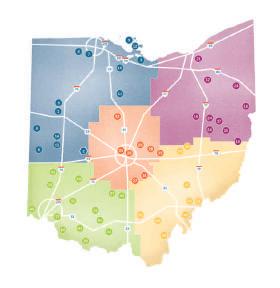
26. 27. 28. 29. 30. 31. 32. 33. 34. 35. 36. 37. 38. 39. 40.
41. 42. 43. 44. 45. 46. 47. 48. 49. 50. 51. 52. 53. 54. 55.
Armstrong Air & Space Museum Cedar Bog Nature Preserve Cooke-Dorn House Fallen Timbers Battlefield Memorial Park Fort Amanda Memorial Park Fort Jefferson Memorial Park Fort Meigs Fort Recovery Museum & Monument Glacial Grooves Geological Preserve Hayes Presidential Library & Museums Indian Mill Inscription Rock Petroglyphs Johnston Farm & Indian Agency Lockington Locks
NORTHEAST OHIO
Custer Monument Fort Laurens McCook House Museum of Ceramics Quaker Yearly Meeting House Schoenbrunn Village Shaker Historical Museum Tallmadge Church Youngstown Historical Center of Industry & Labor Zoar Village
CENTRAL OHIO
Flint Ridge Ancient Quarries & Nature Preserve Hanby House Logan Elm Newark Earthworks Ohio History Center & Ohio Village Shrum Mound Wahkeena Nature Preserve Warren G. Harding Home & Memorial
SOUTHWEST OHIO
Adena Mansion & Gardens Davis Memorial Nature Preserve Fort Ancient Earthworks & Nature Preserve Fort Hill Earthworks & Nature Preserve Harriet Beecher Stowe House John Rankin House Miamisburg Mound National Afro-American Museum & Cultural Center Paul Laurence Dunbar House Serpent Mound Story Mound U.S. Grant Birthplace U.S. Grant Boyhood Home & Schoolhouse William Henry Harrison Tomb
SOUTHEAST OHIO
Big Bottom Memorial Park Buckeye Furnace Buffington Island Battlefield Memorial Park Campus Martius Museum John & Annie Glenn Museum Leo Petroglyphs & Nature Preserve National Road & Zane Grey Museum Ohio River Museum Our House Tavern
PROGRAMS & EXHIBITS AT THE Ohio History Center & Ohio Village
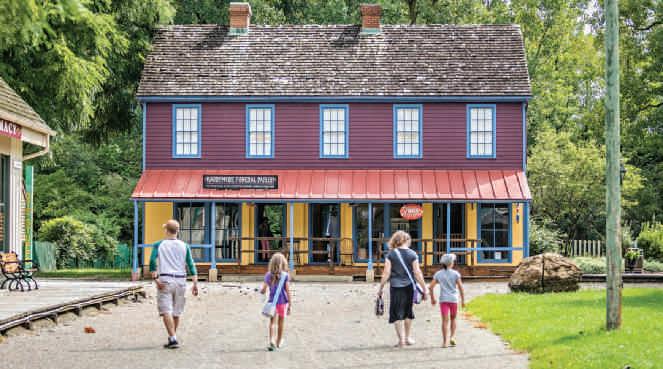
Reopening plans are subject to change based on the evolving COVID-19 status of Ohio and Franklin County. Questions? Call 800.686.6124 or visit ohiohistory.org/openifo.
Clintonville Farmers’ Market
SATURDAYS THROUGH NOV. 20 9 A.M.–NOON South Parking Lot, Ohio History Center, Columbus 4 The Clintonville Farmers’ Market features 60+ producers who grow or make everything they sell. At the market, you’ll find fruits and vegetables, poultry, pasture-raised meats, cheese, honey and jams, baked goods of all kinds, eggs, grains, cut flowers and more, all produced locally and brought to market at the peak of freshness. Preorder and/or shop onsite at the market! clintonvillefarmersmarket.org
1890S ARE BACK STARTING JUNE 30
Ohio Village Reopens Soon
Step into the 1890s when Ohio Village reopens for the 2021 season, starting with special Ohio History Connection members’ preview days Weds., June 30, through Sun., July 4, then opening to all visitors starting Weds., July 7, for an extended season that runs through Sun., Oct. 31.
MORE VILLAGERS, NEW STORIES
Starting this summer, you’ll find more villagers and artisans on hand daily to share new stories of 19th-century Ohio life. They represent the Ohio History Connection’s commitment to reinvesting in Ohio Village and an enhanced village experience. A re-created 19th-century community, Ohio Village is at I-71 & 17th Avenue (Exit 111) on the grounds of the Ohio History Center in Columbus. Hours starting June 30 are 10 a.m.–5 p.m. Wednesday through Sunday. Admission is $13, $11/age 60+ or college student with ID, $7/ ages 4–12, Free/age 3 & under. Ohio History Connection members enjoy free admission.
TIMED TICKETS
So we can ensure a safe experience for all, masks and social distancing are required on Ohio Village grounds and all visitors, including Ohio History Connection members, must have timed tickets. Order at ohiohistory.org/ohiovillage or 800.686.1541 starting Weds., June 16. Enter Ohio Village through the Ohio Village arch in the north parking lot. The Ohio History Center museum is expected to reopen later this year, on Sun., Dec. 26.
See whether our exhibits really do come to life!
Hosted by the Ohio History Center
ONLINE—ATTEND FROM ANYWHERE!
Sat., May 15 7–8:15 p.m.
Advance registration required: ohiohistory.org/virtual

